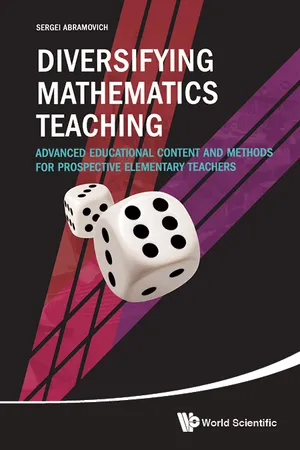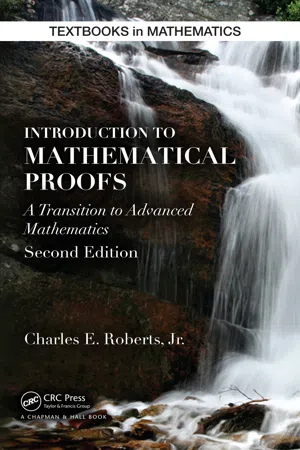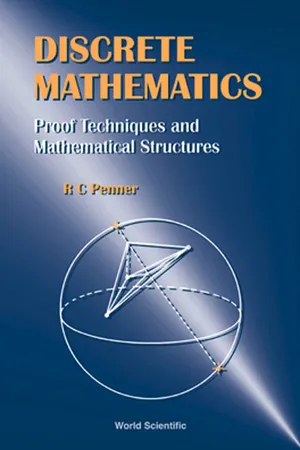Mathematics
Disproof by Counterexample
Disproof by counterexample is a method used to refute a mathematical statement by providing a specific example that contradicts it. In this approach, a single instance is sufficient to disprove a general claim. By demonstrating that the statement does not hold true for a particular case, the validity of the overall assertion is undermined.
Written by Perlego with AI-assistance
Related key terms
1 of 5
3 Key excerpts on "Disproof by Counterexample"
- eBook - PDF
Diversifying Mathematics Teaching: Advanced Educational Content And Methods For Prospective Elementary Teachers
Advanced Educational Content and Methods for Prospective Elementary Teachers
- Sergei Abramovich(Author)
- 2017(Publication Date)
- World Scientific(Publisher)
The use of counter-examples in mathematics education has three major goals. The first goal is to help learners to conceptualize a certain mathematical property, like non-commutativity of the operations subtraction and division. The second goal is to demonstrate that certain mathematical statement lacks generality, such as the assertion that all odd numbers are primes. The third goal is to avoid the so-called Einstellung effect (Chapter 7, section 7.4, Remark 7.4) – an uncritical application of a mastered problem-solving strategy (method) as one moves from a seemingly grasped part of the curricula (e.g., the 228 Diversifying Mathematics Teaching preservation of the sign of an inequality between two positive numbers by doubling them) to a new conceptual domain (involving negative numbers). One can see that the use of counter-examples as a mathematics teaching method requires robust knowledge of the subject matter. Put another way, in order to develop a pedagogical skill of using counter-examples one has to possess a skill of navigating within the whole elementary mathematics content and to appreciate both procedural and conceptual connections among different parts of the content. In this final chapter, reflecting on the material of the preceding chapters, several grade-appropriate examples supporting the above three goals and boosting the skill of the corresponding pedagogy will be presented. 9.2 The Pedagogy of Using Counter-Examples The three goals of using counter-examples in the preparation of elementary teacher candidates also serve at least two didactic purposes. The first purpose is to explain why certain mathematical action has to be taken or a particular linguistic form has to be used when formulating a task. Prospective teachers of primary school mathematics may lack mathematical sophistication expected from their secondary level counterparts. Something that might seem obvious to the latter group could be not so obvious to the former group. - eBook - PDF
- Charles Roberts(Author)
- 2014(Publication Date)
- Chapman and Hall/CRC(Publisher)
The advantage of a proof by contradiction is that the statement R may be any statement whatsoever. However, when actually developing the proof, the disadvantage is not knowing in advance what statement R to select to produce the desired contradiction. The following example illustrates proving a theorem by the technique of contradiction. Deductive Mathematical Systems and Proofs 77 Example 2.2.1.5 Prove the following theorem by the method of contradic-tion. Theorem 2.11 Let n be an integer. If n 2 is an odd integer, then n is an odd integer. Solution Proof: Let P denote the statement “ n 2 is an odd integer” and let Q de-note the statement “ n is an odd integer.” We will prove this theorem by contradiction. Therefore, we assume P and ¬ Q. The negation of the state-ment Q is “ n is an even integer.” Thus, there is an integer k such that n = 2 k . Squaring and using the associative property of multiplication, we find n 2 = (2 k )(2 k ) = 2( k (2 k )) = 2 p where p = k (2 k ). Since the integers are closed under multiplication, p is an integer, and, consequently, n 2 is an even integer. The statement “ n 2 is an even integer” is the statement ¬ P. Thus, we assumed the statements P and ¬ Q are true and we deduced that the statement ¬ P is true. Hence, we reached the contradiction P ∧ ( ¬ P). Consequently, we have proven Theorem 2.11 by contradiction. Remark: Observe in this case that the statement R in the contradiction R ∧ ( ¬ R) is the hypothesis P. Although a direct proof, a proof by contraposition, and a proof by con-tradiction are all acceptable forms of proof, most mathematicians, order of preference for a proof is a direct proof, followed by a proof by contraposition, followed by a proof by contradiction. In the following example, the same statement is proven using each type of proof. Example 2.2.1.6 Prove the following theorem by (a) a direct proof, (b) a proof by contraposition, and (c) a proof by contradiction. - eBook - PDF
Discrete Mathematics
Proof Techniques and Mathematical Structures
- R C Penner(Author)
- 1999(Publication Date)
- WSPC(Publisher)
An interesting consequence of the previous comments is that the notion of what constitutes a legitimate proof is apparently culturally dependent. Our imag-inary conversation with Pythagoras at the end of §B.l already illustrated this intriguing phenomenon: There is no absolute standard of proof from a historical LB Exercises 43 perspective, and the notion of rigor in mathematics has actually changed over the ages. There are several aspects to this: There can be philosophical objections to a proof (for instance, intuitionism), and there are also cultural agreements on what constitutes a valid proof and especially its exposition. The perpetuity of mathematical results which was discussed above in the context of our imaginary conversation with Pythagoras is all the more remarkable in light of this mutability of what constitutes a legitimate proof. Students sometimes find this mutability disturbing, but one can only hope to reflect the standards of rigor of her or his own era. We hasten to add that the methods of proof we present in this chapter are all well within the bounds of what is considered valid proof these days. B.5 DISPROOFS Having spent most of this chapter illustrating how one goes about proving an assertion is true, we turn finally to the question of how one might prove that an assertion is false. For the simplest example, we may show a particular proposition P is false by showing that its negation -»P is true. To prove that P =$■ Q is false for particular propositions P and Q, we must show that P is true and Q is false; this follows immediately from the definition of implication. To show that 3xP(x) is false, we must show that P(xo) is false for each member XQ of the universe (that is, we must show Vx-iP(x) is true), whereas to show that VxP(x) is false, we must simply exhibit some XQ in the universe so that P{XQ) is false (that is, we must show 3x-P(x) is true).
Index pages curate the most relevant extracts from our library of academic textbooks. They’ve been created using an in-house natural language model (NLM), each adding context and meaning to key research topics.


